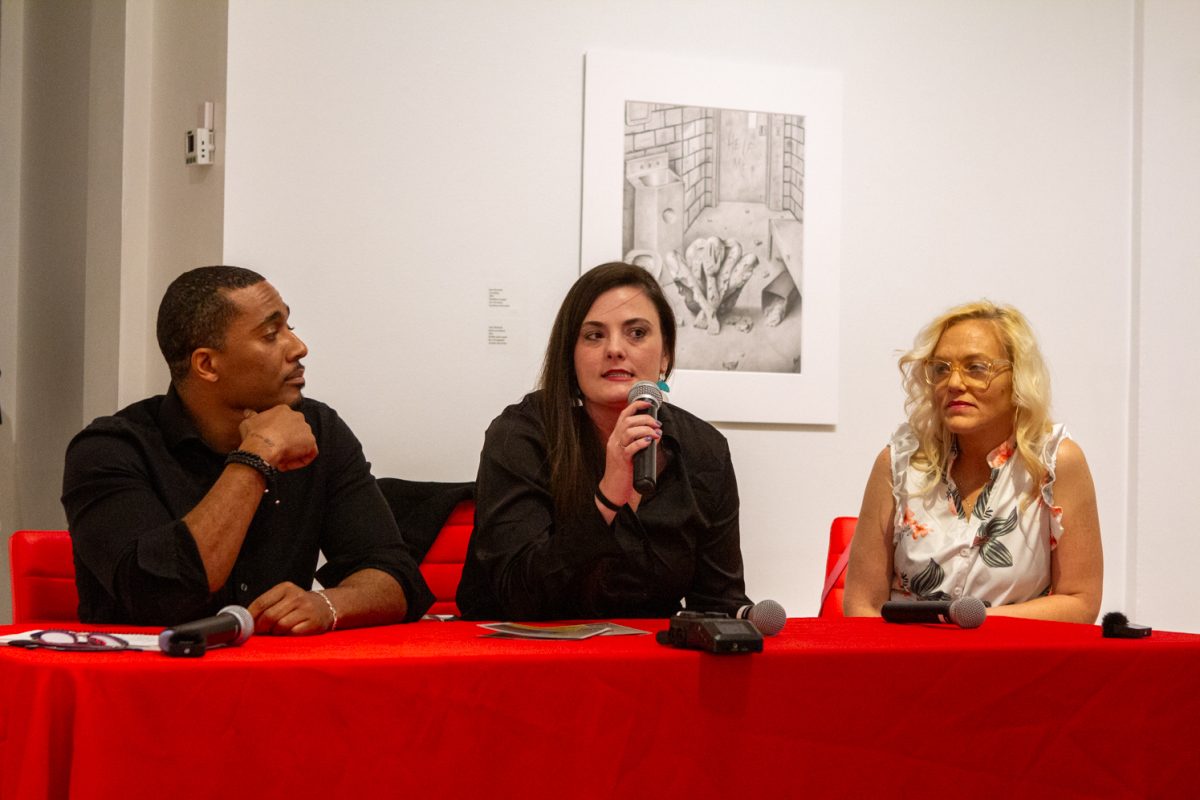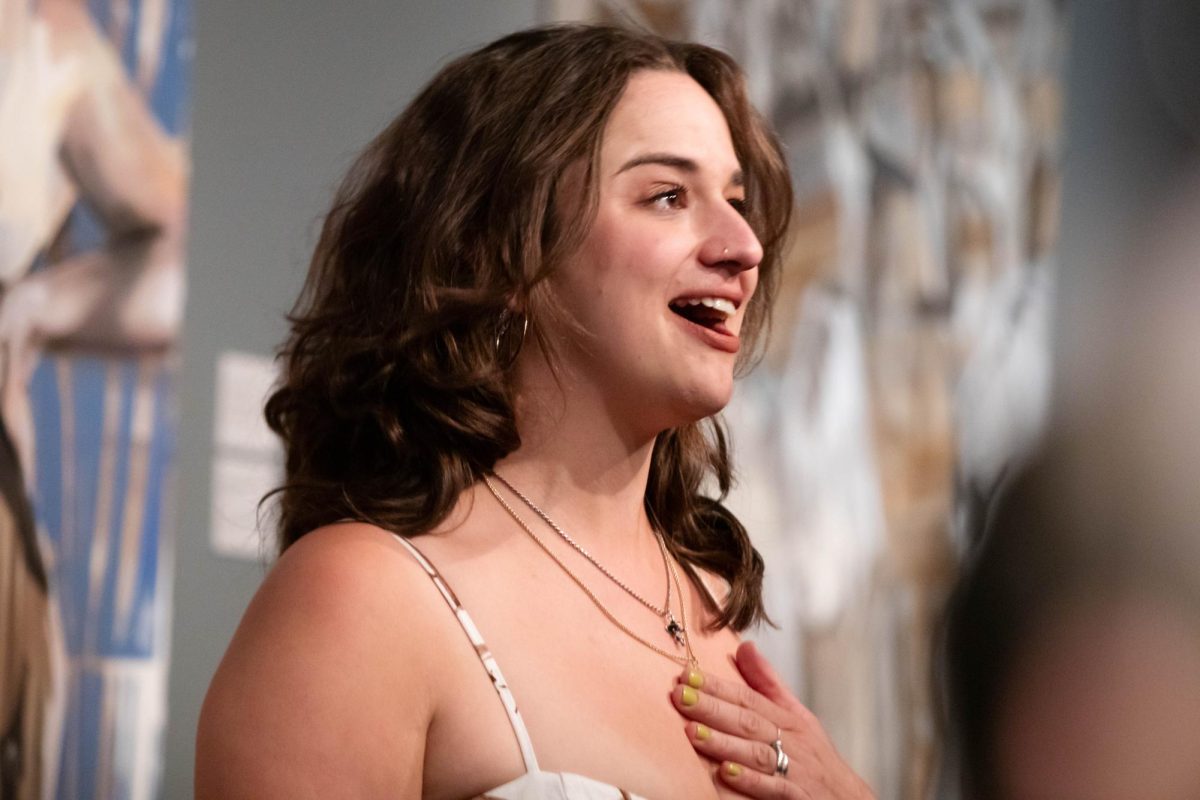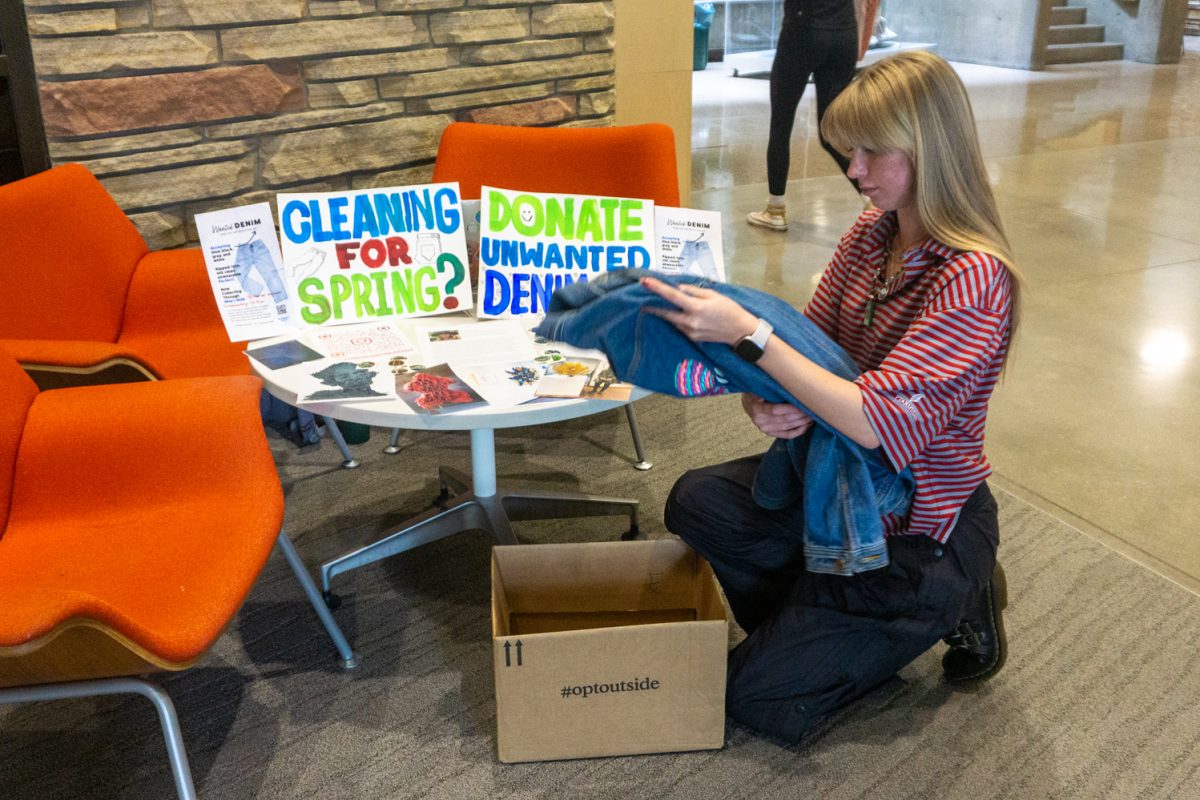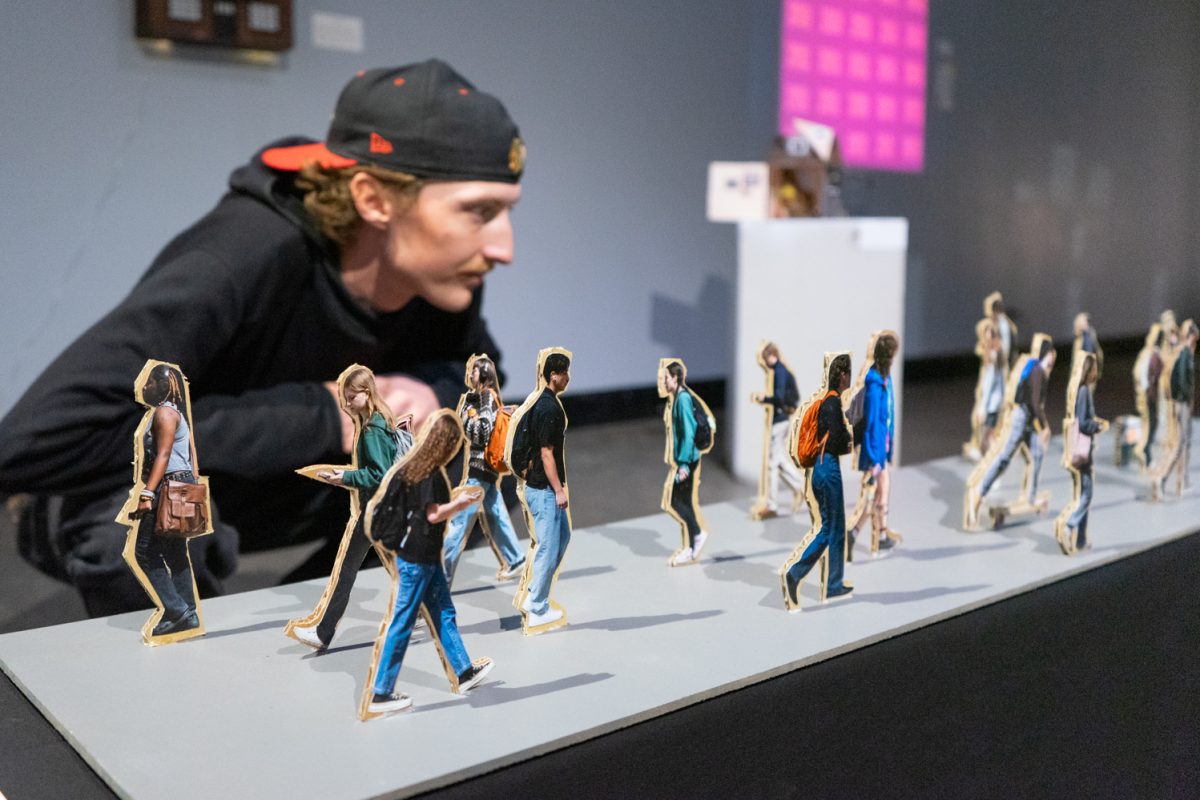The Fort Collins Museum of Art presented a glimpse of the world behind bars with their two new exhibits that opened Jan. 26.
The first exhibit, “To See Inside: Art, Architecture and Incarceration,” is from those involved with the University of Denver Prison Arts Initiative.
On Feb. 8, a panel was held at the MoA to discuss the art and the United States justice system. The members of the panel were Sarah McKenzie, Shawna Hockaday, Sean Marshall and Ashley Hamilton.
The room was packed with proud family members and curious Fort Collins residents.
“I have eight kids, and so when I was incarcerated, it was the first time I was ever really alone. I had nobody calling out ‘Mom’ for me anymore.” –Shawna Hockaday
McKenzie is a former associate professor for the Cleveland Institute of Art. She now teaches graphite and color pencil drawing as a part of the Prison Arts Initiative. She worked on a museum architecture project before she started her prison architecture project.
“I started to think about museums as institutions and then institutions in general,” McKenzie said. “How when we walk into an institution, we start to change our behavior to suit the space we are in. That made me wonder about prison space. Museums represent this high point of institutions, and prisons are a low point. I thought it would be so interesting to look at prisons and see if they have any similarities to museums because of the fact that it is institutional space.”
While talking with others about her new prison architecture project, McKenzie got in touch with the people experiencing these spaces.
“I called up the DU PAI; I thought I would just see if they needed someone to file papers for them or something,” McKenzie said. “I didn’t think that if I called up Ashley’s organization (DU PAI) out of the blue that they would say, ‘You can start teaching for us next month,’ but they did. I led an online drawing class that spring. That was really the first step, and the rest just snowballed.”
Hockaday, formerly incarcerated and a student in McKenzie’s class, has been married for 13 years.
“I have eight kids, and so when I was incarcerated, it was the first time I was ever really alone,” Hockaday said. “I had nobody calling out ‘Mom’ for me anymore.”
Hockaday regained freedom and healing through her art.
“My wife is currently incarcerated, and we got married in the middle of my craziness, but she is just my best friend,” Hockaday said. “Hopefully, she will get home in 2025. I am going to support her as she goes through this because people literally forget about you.”
Hockaday’s art is going to be hung at the Colorado Capitol in the governor’s office at the end of March.
Sean Marshall is a formerly incarcerated artist with an eye for portraits.
“If it were not for my mom and my daughter, I would be dead,” Marshall said.
Throughout Marshall’s art, you can see a shift from when he was in prison to when he was released.
“My art now is definitely a lot lighter,” Marshall said. “So much of my art back then was dark. When you look at it, you can definitely see my suffering. You can see my longing to be free, my longing to connect with my loved ones and my longing to find purpose. Now when I create it for the purpose of healing others, I have come to a place of healing, and now my art is to inspire, to uplift, to teach, to mend — and that’s the difference.”
When Marshall began exploring art in prison, he met a man named John Sherman.
“He is a remarkable artist; he was serving a life sentence, and he ended up serving I think nearly 30 years if not more before he was given clemency,” Marshall said. “He received clemency shortly before I did.”
The clemency application involves submitting proof of growth and rehabilitation and is rarely awarded.
Hamilton is the co-founder and executive director of the DU PAI. Her career started after her time at New York University, where she pursued the theatrical arts in a more mainstream way up until one of her friends was teaching a class in the Lower East Side.
Hamilton’s curiosity began to grow, which began her 14-year journey into teaching inside both jail and prison systems.
“Really, the draw was wanting to bring light and creative practice into a space that does not have that,” Hamilton said.
The second exhibit, “A Year of Killing,” is a photo documentary project that recreates the last meals of male death row inmates.
The artist, Henry Hargreaves, is fascinated by the duality of the death penalty. Hargreaves is a food photographer who grew up in Christchurch, New Zealand, and he worked in the food industry before he became a full-time photographer, gaining his affinity for food, which also influenced his artistic journey.
Hargreaves has an outsider’s perspective on the ideals of America, which has helped his research on the last meals of death penalty inmates.
“I am from overseas, and America is always, you know, viewed as this shining light of decency and democracy and all these things,” Hargreaves said. “But it has these juxtapositions. It’s such a fraught relationship with death.”
Hargreaves’ light bulb moment was when he read about Texas getting rid of the last meal requests of death row inmates.
“I did some research, and as I was reading, these prisoners became not just statistics and people who had kind of been swept out of the public eye; they became very humanized, and it brought up such large questions around the death penalty,” Hargreaves said. “That was the moment that sparked it.”
His goal was to recreate the feeling he felt reading these requests through food photography so that others may begin to wonder about the death penalty and share the same feelings of humanity as he did.
Reach Gwendolynn Riddoch at entertainment@collegian.com or on Twitter @CSUCollegian.











